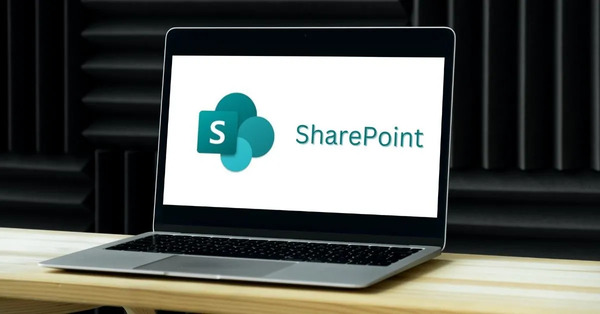Notifications
ALL BUSINESS
COMIDA
DIRECTORIES
ENTERTAINMENT
FINER THINGS
HEALTH
MARKETPLACE
MEMBER's ONLY
MONEY MATTER$
MOTIVATIONAL
NEWS & WEATHER
TECHNOLOGIA
TV NETWORKS
VIDEOS
VOTE USA 2026/2028
INVESTOR RELATIONS
DEV FOR 2025 / 2026
ALL BUSINESS
COMIDA
DIRECTORIES
ENTERTAINMENT
FINER THINGS
HEALTH
MARKETPLACE
MEMBER's ONLY
MONEY MATTER$
MOTIVATIONAL
NEWS & WEATHER
TECHNOLOGIA
TV NETWORKS
VIDEOS
VOTE USA 2026/2028
INVESTOR RELATIONS
DEV FOR 2025 / 2026
About Me
 Xanthe Clay
Xanthe Clay Xanthe Clay is a professional digital marketer based in New Jersey, USA. Over the last five years, she has crafted innovative strategies that redefine success in the digital world at KernelApps Private Limited. By leveraging social media, she has driven the brand's online presence, created captivating marketing campaigns, and enhanced its marketing. As a result of her expertise, the company has achieved unprecedented growth and success in the digital world. She is passionate, creative, and driven in everything she does.
 Xanthe Clay -
Feb 18 -
Technology -
sharepoint migration
migration sharepoint
sharepoint migrator
sharepoint migration tool
-
371 views -
0 Comments -
0 Likes -
0 Reviews
Xanthe Clay -
Feb 18 -
Technology -
sharepoint migration
migration sharepoint
sharepoint migrator
sharepoint migration tool
-
371 views -
0 Comments -
0 Likes -
0 Reviews

Planning, therefore, is of utmost importance when going to SharePoint. Wrong strategies may lead to data loss and downtime. A well-laid strategy can ensure the least disruption. You would read about the essential approaches to successful SharePoint Migration in this article. Whether you are upgrading to a new version or migrating from another platform, your approach is everything.
SharePoint Migration comprises transferring data, files, and settings to a different SharePoint environment. Companies migrate for enhanced collaboration, security, and storage. Choosing a compatible tool for SharePoint migration makes it easy. It is always good to plan for a migration to minimize downtime and enhance the user experience.
First, the goal of the migration should be clearly outlined. What are the reasons to migrate? Is it for better performance? Better security? Simpler compliance? Well-defined objectives lead to effective project planning. When the goals are clear, then you can allocate the right resources and tools for uninterrupted migration.
The current SharePoint configuration has to be scrutinized. Outdated content has to be retrieved, and any data considered necessary for migration should be identified. This reduces undesirable transfers that make storage burdensome. The audit should also cover site architecture, user permissions, and storage needs. This will also ensure that you will migrate only what is necessary, thereby saving time and maintaining simplicity in the project.
In this step, determining which SharePoint migrator will be used is really crucial. This tool can actually help to invoke successful data transfer effectively. Choose the right tool that meets your need in the migration process. Always look out for security features, user-friendliness, and automation. The best tool is one that guarantees minimum downtime with the utmost integrity of data. Many migration tools in the market offer customization features and advanced functionalities for an easier transfer of your data, such as incremental migration with phased data transfer.
An organized migration plan guarantees efficiency. Among that plan will be:
Developing a comprehensive roadmap makes it possible to keep things organized. Migrate in phases to minimize risk. Maintain consideration of dependencies among different SharePoint elements to avoid disruption.
Create a prototype migration of a small amount of data. You should find issues rather than find them out later. Testing gives you the chance to have a successful pilot run with minor disruption. Through pilot, you will be able to know how the migration tool directly affects the strategy. Besides, identify the missing configurations and fix them before going with final migration.
Pre-migration, remove outdated and redundant files from systems and make a clutter-free environment. More so will save time in use if it organizes content in the first place, consequently leading to a cleaner SharePoint environment. Redundant and outdated files slow the migration down, wasting unnecessary storage space. Data classification separates relevant information from old content.
Data Security is an essential issue in migration. A SharePoint migration tool that embeds encryption and compliance is highly recommended. Sensitive information will not breach or leak it. Role-based access control (RBAC) is where user permissions are carried over after migration. In addition, the new environment in SharePoint must meet all applicable regulatory and industry standards to avoid compliance issues.
For the acceptance of any solution, user training is crucial. Provide employees with adequate assistance concerning the new system. This will ensure better onboarding and productivity. Employees need to know the new structure, navigation, and collaborative functions. Carry out training sessions, document the processes, and encourage hands-on practice so that users experience the upgraded SharePoint platform firsthand.
After the migration is done, check for the integrity of data. Are any files and permissions still intact? It works best when monitoring becomes a continuous process. After setting up your post-migration checklist, verify all components are working as expected. Monitor performance involving the site, broken links, and accessibility issues for a smooth user experience.
A SharePoint migration is not a one-off event. You need continuing maintenance and updates to keep the system running well. A support structure to fix issues and make enhancements should be put in place. Regular performance checks and updates will keep the system tuned and secure.
Planning is the key to successful migration of SharePoint—in an efficiently structured manner, which minimizes all the risks involved and guarantees smooth movement. An excellent SharePoint migrator adds even more efficacy to this; for instance, Kernel Migration for SharePoint is a reputable tool assuring smooth and secure SharePoint to SharePoint migration. It possesses robust features to ensure that your data is safe and intact throughout the entire process. Choose a perfect strategy and tool for hassle-free migration. With meticulous planning and execution, organizations can unlock SharePoint's full potential towards better collaboration and productivity.
Read more blogs: Latinos Del Mundo
